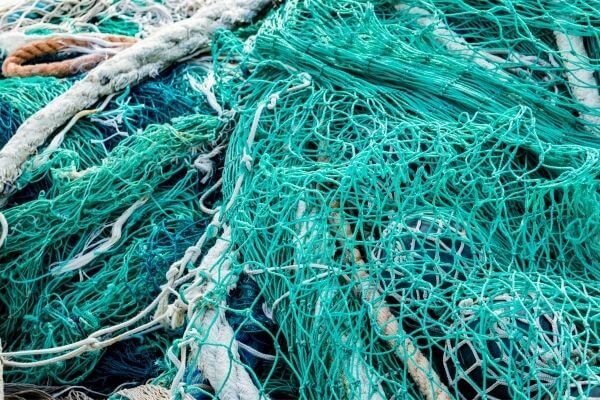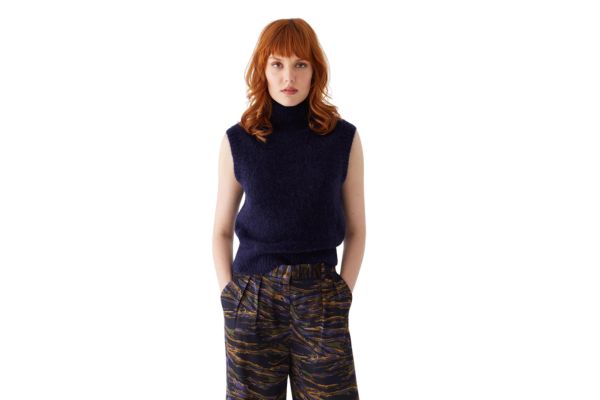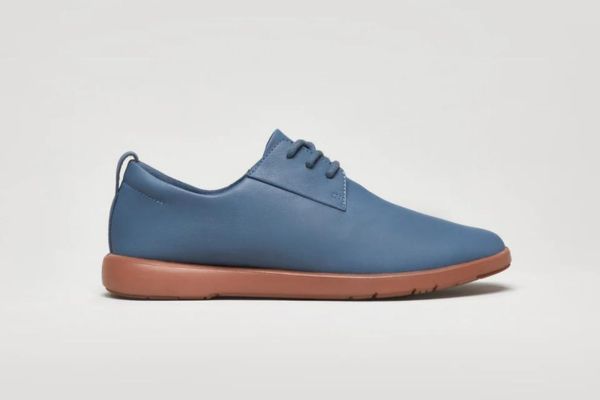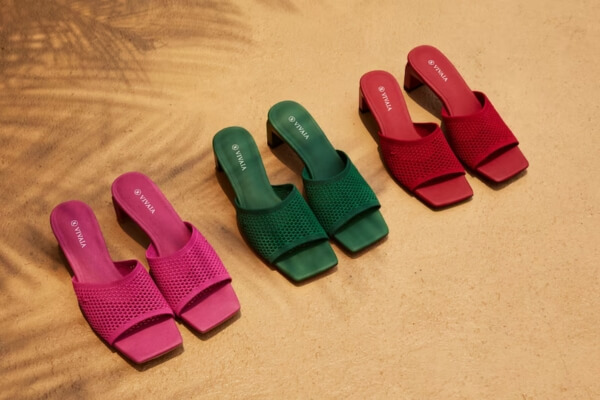The story of Econyl is an excellent example of a company reinventing itself from the old ways into the future. It’s hard not to get motivated to join the fight when you watch their CEO Giulio Bonazzi during interviews. He is so inspirational and so passionate about making a difference in the world. Not only has he created a sustainable and circular business, but he has done so while building a successful brand.
Quick Navigation
What Is Econyl?
What is Econyl? Econyl pronounced eee-co-kneel, is recycled nylon made from old fishing nets, carpet flooring, and industrial plastic. The nylon is recycled back into its original purity and can be recycled again at the end of its life.
Not only are they eliminating waste that would otherwise remain in the ecosystem for decades, but they are also saving precious fossil raw material. It creates a closed-loop system where they can regenerate the nylon again and again without losing quality.
Aquafil, the company that makes Econyl fabric and yarn, was founded in Italy in 1965. They began recycling nylon back in the 1990s through the reprocessing of fibers. However, it wasn’t until 2011 that they started making Econyl fabric from pre- and post-consumer waste.
Econyl was the vision of Aquafil’s president and CEO Giulio Bonazzi. It took four years of extensive research and development to achieve the results you see today. Vastly underestimating the journey’s difficulty, Giulio wonders if they had known how hard it would be to fulfill his dream, whether they would have started it at all.
Lucky for us, they did start the journey and saw it through to the end. The Econyl Regeneration System fulfilled Aquafil’s dream of regenerating polyamide waste (the most common polyamide is nylon) and gave the world a taste of what can be achieved. The best part about this process is not that it takes waste and creates it into something useable but builds a circular system for the material to be regenerated at the end of its life.
Aquafil collects nylon waste, including fishing nets, old carpets, and fabrics, even collecting from their own clients. They take this waste and transform it into recycled nylon. In December 2018, Aquafil celebrated its first plant in the United States to recycle old carpet. The carpets and rugs are given new life by being transformed back into raw materials.
Much of these recovered materials become Econyl yarn and fabric, while other industrial sectors use some of the remaining materials. If you have heard of Econyl fabric, you might know of it as a textile mainly used in the apparel industry. True, but Econyl is also making headway in the interior design market with recycled carpets from their regenerated nylon.
In fact, in 2015, they achieved Cradle to Cradle® Gold level certification with their partner Desso for its new ‘Gold Collection.’ It was awarded to them for their carpet tiles made using Econyl regenerated fibers and making the tiles with 80% recyclable materials overall.

What's so good about Econyl
Econyl products have many benefits:
- The obvious benefit is that it takes waste materials and converts them into something useable again.
- They work to rescue discarded nets from the ocean.
- The recycled nylon yarn does not require any fossil raw material and therefore has a much lower environmental impact.
- Econyl can be regenerated, again and again, creating a closed-loop system.
- For every 10,000 tons of Econyl® Raw material, they save 70,000 crude oil barrels and avoid 65,100 tons of CO2 equivalent emissions.
Plus, the resulting recycled fibers and recycled fabrics have all the same qualities as if they were made from crude oil. It has good elasticity when woven and is strong. The yarn provides a soft, lightweight recycled fabric with good water-resistant properties due to its low absorbency.
The Econyl Process
The reverse supply chain
The first step in creating something from waste is that you need to get hold of the waste product. Once you find the waste, you have to organize for it to be transported to your plant. This is what is referred to as a reverse supply chain.
Aquafil collects pre-consumer waste created during the production of nylon 6 and post-consumer waste like fishing nets and carpets. In order to get hold of this material for processing, Aquafil created its own reverse supply chain.
They collect end-of-life items such as fishing nets, carpets, fabrics, clothes, and other items. They also collect end-of-life products from their own clients. These waste products are collected throughout the world. For example, in 2015, Aquafil recovered 12 tons of abandoned and spent fishing nets with the support of the Basque Government and in collaboration with Spanish brand Ternua.
Aquafil collects a large amount of spent carpet through its recycling facilities in the US. They currently collect almost 100 million pounds (45 million kilos) a year.
Setting up this new supply chain was not easy and required a lot of work. From setting up transportation and procedures to making sure they were receiving the right kind of waste. All their hard work has helped build a system that ensures a constant flow of waste materials.

The Nylon Regeneration Process
Once the nets, carpets, and other materials have been collected, they are then decontaminated. That is, they are sorted and cleaned. They are then put into what Aquafil refers to as a “magic box”. This is where the magic happens. The process uses a chemical to break down the waste material and return it to its original building blocks, the monomers. The process is called depolymerization.
The material is then rebuilt back into nylon polymers, and just like the traditional nylon, it is used to spin, weave, or mold new products. The process can even be used on blended materials such as a nylon/elastane blends. Unfortunately, the current process only recovers the nylon from these blended fabrics. Hopefully, in the future, this technology can be developed.
Once the Econyl yarns are produced they can be used to create many different products. Finally, the real magic, I think, is that this process can be repeated over and over again.
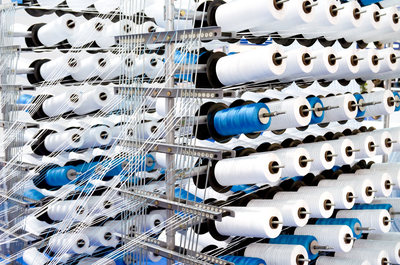
“Sustainability is not a goal to be reached but a way of thinking, a way of being, a principle we must be guided by.”
Giulio Bonazzi – Chairman, Aquafil Group
How is Econyl used?
Econyl can be used in the same way that petroleum-based nylon is. It can be spun into yarn and used in textiles for apparel and carpets or it can be molded into a rigid form. The majority of companies are using Econyl fabric for clothing and carpets. More than 300 brands have embraced Econyl in their products, and the number is growing.
Outerknown, surfing legend Kelly Staters fashion brand was one of the first to adopt Econyl. Nowadays, you can find Econyl fabric in many different products from activewear, swimwear, stockings, leggings, backpacks, linings, carpets, ropes, and more recently, sunglasses or chairs.
Popular brands like Speedo, Prada, Stella McCartney, Breitling, and Gucci have all developed collections using Econyl. In 2019 Prada launched a sustainable line of their iconic Prada bag using Econyl® Nylon. While Stella McCartney’s used Econyl® Nylon in their 2017 Autumn edition of their classic GO bag.
Econyl fabric is becoming increasingly popular in recycled swimwear and activewear products. In fact, there are so many brands making swimwear and activewear from recycled fabrics that we believe there should be no reason to buy from brands still using virgin materials. We hope one day, products like Econyl will be more common than nylon made from virgin materials.
The second most common use of Econyl yarn is in carpets. Aquafil encourages interior designers to embrace sustainable materials. Brands such as Mercedes-Benz are embracing the material. They have introduced floor mats in the new S-class made with ECONYL® regenerated nylon.
Aqualfil has established several recycling plants in the US, focusing on sourcing materials through the 4 billion pounds of carpet that Americans dispose of in landfills each year. They have opened two plants, Arizona and California.
These plants are processing 25 thousand square yards of carpet each day. That’s 36 million pounds of carpet diverted from landfills. They don’t just recycle the nylon for their Econyl process. The polypropylene goes to the injection molding industry, and calcium carbonate goes into the road construction or concrete stream.
If you are interested in getting on board, Aqualfil provides a free e-book called “5 Reasons for Interior Designers and Architects to use Sustainable Materials”. They also run a webinar series on “Innovation in materials production and building construction.” Head to their website to find out more.
Econyl Certifications
Aquafil has many certifications, including:
- Certified DNV GL – an international accredited registrar and classification society in Norway, certifies companies’ compliance to third party standards such as ISO 9001 and ISO 14001.
- Standard 100 certification from OEKO®TEX, one of the world’s best-known certifiers for testing harmful substances in textiles.
- Along with Desso, they have achieved Cradle to Cradle® Gold level certification for its new ‘Gold Collection.’ For their carpet tiles. Cradle to Cradle certification is a globally recognized measure of safer, more sustainable products made for the circular economy.
Are There Any Negative Impacts
Econyl textile is still a synthetic material and, therefore, can leak microplastics. These are tiny particles of plastic released when you wash clothing made from synthetic fabrics like polyester or nylon.
There are ways that you can minimize the release of microfibers, such as using a wash bag or filter in your washing machine. Taking care of your clothing is important, too, especially with recycled swimwear fabric.
Being able to buy recycled fabrics should not stop us from rethinking fast fashion. We still need to ask ourselves the questions. Do we really need it? Can we buy second hand? Can we rent it or borrow it. Have a read of our Reduce reuse recycle. Ways to get you thinking article for more tips to help get you thinking about reduction first.
What's in the future for Aquafil?
Aquafil is not stopping with Econyl. Adopting the United Nations Sustainable Development Goals (SDGs), Aquafil has established an Eco Pledge. The pledge includes rethinking products to give new life to waste, producing responsibly by reducing consumption, emissions, and waste, caring for people, collaborating with suppliers and customers, and thriving in harmony with the local communities in which they work.
They continue their work on rethinking products and developing innovative solutions to increase their sustainability. In 2017 Aquafil started a research project in collaboration with the bioengineering company Genomatica Inc. The project is funded by the European research program H2020, and it aims to develop a bio-nylon from renewable raw materials. It’s hoped this material, once developed, will be taken up by the apparel markets.
Extra Kudos
We always like to add the extra Kudos that we think companies deserve, so here are a few for Aquafil.
- Aquafil supports several organizations, including Healthy Seas, a global organization of professional divers that volunteer to rescue ghost nets and abandoned fishing nets from the sea.
- Their partnerships with companies like Prada and Mercedes-Benz help to generate more interest in the circular economy.
- Aquafil is a member of the Ellen MacArthur Foundation Network, the world’s leading circular economy network.
Where to find Econyl Products
An excellent place to start is our Brand Directory.
Here are a few of our favorites that are using Econyl.
- Econyl Website
- Aquafil Website
- Thomas, Dana, 2019, Fashionopolis. New York: Penguin Random House (Penguin Press)
- Econyl Blog, 2020, Mercedes-Benz presents the new S-class with floor mats made with ECONYL® regenerated nylon
- Econyl Blog, 2017, Redcycle Project in Spain with Ternua
- Econyl Blog, 2017, SUSTAINABLE BRANDS – Trending: Transition Towards New Textiles Economy
- Case Study: Aquafil Group. Production of nylon yarn from waste materials
- Ellen Macarthur Foundation, Production of nylon yarn from waste materials
- Econyl Blog, 2014, The story behind the ECONYL® carpet
- Livia Firth, 2020, Investing into the future of fibers


